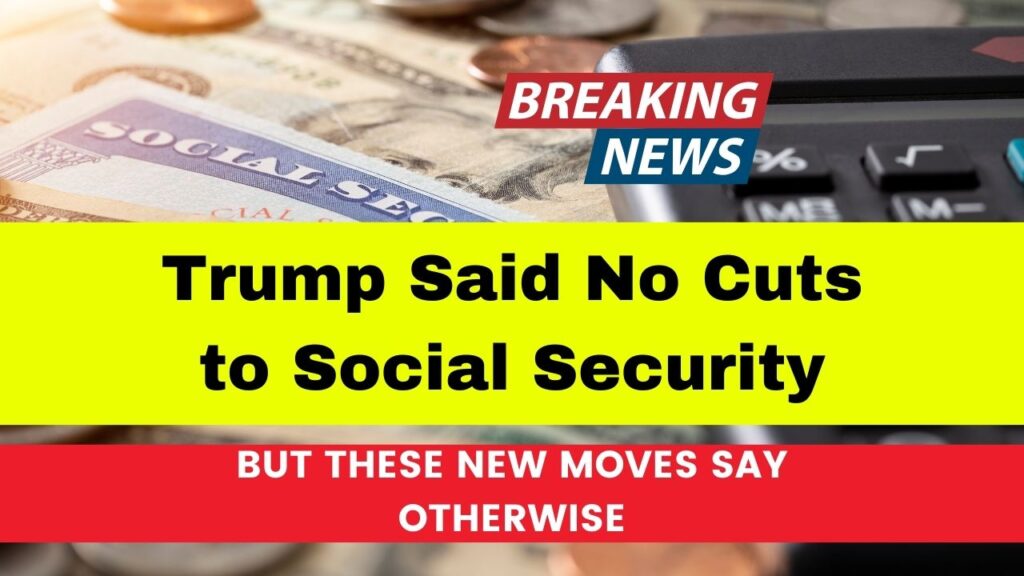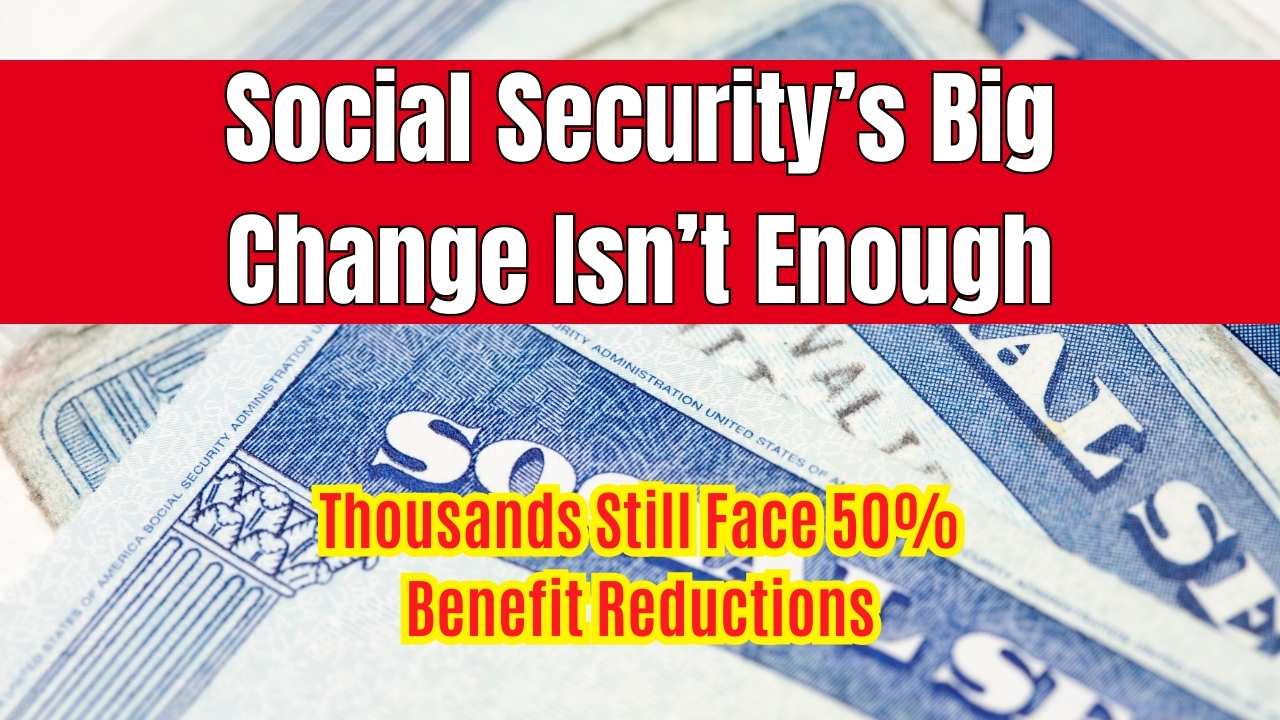Trump Said No Cuts to Social Security: Former President Donald Trump has long promised not to cut Social Security, one of the most relied-upon safety nets for millions of Americans. In campaign speeches, public statements, and during his presidency, he often reassured voters—particularly seniors—that their benefits would remain untouched under his administration. However, recent changes in staffing, administrative processes, and leadership at the Social Security Administration (SSA) tell a different story. While direct benefit cuts have not occurred, a series of operational shifts appear to be reshaping the agency’s ability to deliver services efficiently and equitably. These developments have sparked bipartisan concern and public outcry, especially among retirees, low-income workers, and disability beneficiaries.
Trump Said No Cuts to Social Security
Despite repeated promises not to touch Social Security, recent developments under former President Donald Trump’s watch show a different picture. While no direct benefit cuts have occurred, staffing reductions, office closures, and new service barriers have effectively made it harder for many Americans to access the benefits they’ve earned.
The broader implication? A slow erosion of accessibility can sometimes have the same real-world effect as financial cuts—especially for the elderly, the disabled, and those without access to reliable digital tools. Now, more than ever, it is crucial for beneficiaries to stay informed, speak up, and make use of every available resource to protect their access to essential services. Lawmakers, too, must scrutinize these operational changes and ensure that the nation’s safety net doesn’t fray under the weight of so-called efficiency reforms.

| Topic | Details |
|---|---|
| Staff Reductions | Approximately 7,000 SSA employees laid off, reducing workforce from 57,000 to 50,000. |
| Office Closures | Six out of ten regional SSA offices closed; additional field office closures expected. |
| New SSA Commissioner | Frank Bisignano, former CEO of Fiserv, confirmed as SSA Commissioner on May 6, 2025. |
| Policy Changes | Phone-based identity verification eliminated for some services; in-person visits now required. |
| Public & Political Response | Bipartisan concern, with Senate Democrats calling for investigations into service disruptions. |
| Official SSA Website | www.ssa.gov |
A Deeper Look into the Administrative Changes
1. Massive Staff Layoffs and Office Closures
The SSA is responsible for administering benefits to over 70 million Americans, including retirees, disabled individuals, and survivors. Yet, in the last 12 months, the agency has undergone significant downsizing. Approximately 7,000 employees have been laid off, reducing the overall workforce from 57,000 to just 50,000.
This reduction is paired with the closure of 60% of the agency’s regional offices and plans to shutter even more field offices. For rural communities, this translates to a longer travel time for in-person services. For urban centers, it means longer lines and extended appointment wait times.
While the official explanation from the Department of Government Efficiency (DOGE) claims that the agency is transitioning toward digital-first services, critics say that the move disproportionately affects vulnerable populations who rely on in-person assistance.
2. Leadership Shift Sparks Concern
In May 2025, the Senate confirmed Frank Bisignano, a seasoned executive formerly with Fiserv and JPMorgan Chase, as the new SSA Commissioner. His corporate background has triggered concern among Democrats and senior advocacy groups who argue that his experience in financial restructuring may conflict with the agency’s public service mission.
Bisignano has promised to modernize SSA’s infrastructure and improve digital efficiency. However, his track record with aggressive cost-cutting measures has led many to speculate whether the modernization efforts are a smokescreen for austerity.
3. Changes to Service Access and Verification
One of the most immediate and impactful changes involves how beneficiaries verify their identities. The SSA quietly rolled out a policy ending phone-based identity verification for new applications for retirement, disability, and survivor benefits. Instead, individuals who can’t use the agency’s online portal must now verify their identity in person.
The change was initially justified as a move to curb fraud. But critics—including AARP and the National Committee to Preserve Social Security and Medicare—point out that this adds barriers for people with disabilities, elderly applicants, and those in remote areas.
How Trump Said No Cuts to Social Security Affects You: Practical Guidance
Whether you’re currently receiving benefits or expect to apply soon, these changes could impact how—and how easily—you interact with the Social Security system.
What You Can Do
- Use Online Resources Whenever Possible
The SSA’s online portal offers a wide range of services, including benefit calculators, application status updates, and account management. Setting up a “my Social Security” account can help you avoid unnecessary trips. - Book Appointments in Advance
With staffing shortfalls and office closures, walk-ins are harder than ever. Schedule your visits or calls ahead of time and prepare documentation to streamline the process. - Contact Elected Officials If You’re Affected
If you face significant hurdles due to office closures or policy shifts, don’t hesitate to reach out to your congressional representative. Lawmakers can sometimes help expedite claims or intervene with federal agencies. - Connect with Advocacy Groups
Organizations like AARP and the National Organization of Social Security Claimants’ Representatives (NOSSCR) provide updates, advocacy tools, and assistance to individuals affected by SSA changes.
Frequently Asked Questions (FAQs)
Q1: Are Social Security benefits being reduced under Trump’s new plan?
A: Technically, no benefits have been cut yet. However, reductions in staffing and access to SSA services could delay applications or make it harder for eligible individuals to receive timely support.
Q2: Can I still apply for Social Security online?
A: Yes, many services—including retirement and Medicare applications—can be completed online. However, some processes now require in-person verification, especially for first-time applicants without existing accounts.
Q3: What should I do if my local SSA office is closed?
A: Check SSA’s online office locator tool. If your nearest office is closed, you may be redirected to another office. Plan for additional time and consider using the online system or calling their national hotline.
Q4: Why was phone verification removed?
A: According to SSA, the decision was aimed at reducing identity theft and fraud. However, the change has been criticized for creating more hurdles for those with limited mobility or technological access.
Q5: Will there be more cuts?
A: The future of the SSA budget and workforce remains uncertain. With a new commissioner focused on restructuring, more shifts may be on the horizon, although Congress has vowed to maintain benefit levels for now.





